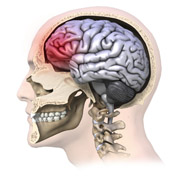Research and Innovation, UNL Office of

Center for Brain, Biology, and Behavior: Faculty Publications
Functional Outcomes of Cleft Lip Surgery. Part III: Measurement of Lip Forces
Document Type
Article
Date of this Version
11-2007
Citation
Published in final edited form as: Cleft Palate Craniofac J. 2007 November ; 44(6): 617–623. doi:10.1597/06-138.1.
Abstract
Objective: To investigate lip force dynamics among participants with a repaired cleft of the lip and noncleft control participants.
Design: A parallel, three-group, nonrandomized clinical trial.
Subjects: Forty-eight participants with cleft lip and 36 noncleft participants.
Analysis: Participants attended two separate visits. At each visit, they were instructed to produce fine motor control and maximum compression forces with each upper and lower lip in response to visual force targets. Measures of force were extracted, and the data were fit using regression techniques.
Results: The upper and lower lips of the participants with a cleft lip demonstrated less time on target, while the lower lips had shorter rise time but higher peak forces, a higher rate of force recruitment, and increased maxima of the first derivative of force compared with the noncleft participants. For all participants, there was a learning effect for certain force variables between the two visits and with increasing age.
Conclusion: For participants with a cleft lip, force regulation of the circumoral region within the operating range presumed important for facial and speech animation is compromised because of impairments in force recruitment, gradation, fractionation, and stability. In the presence of a change in upper lip tissue mechanics due to scarring or neuromotor impairment, such as a cleft, the lower lip typically exhibits compensatory motor actions.


Comments
Copyright 2007 American Cleft Palate-Craniofacial Association
Link goes to PubMed Central public-access MS version.